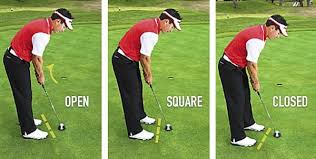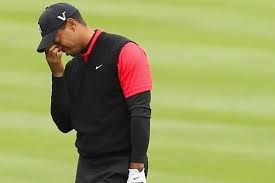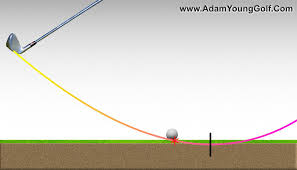Are your drives randomly flying left or right every time you swing your driver? If you don’t understand what’s causing the flight path you will never be a great golfer. The swing path of your club and club face direction at impact are both contributing to your launch direction and path: straight, draw, fade, hook or slice. Check out this summary and then start practicing to shape the shot you want. Controlling the side-spin of your ball is the starting point for great golfers.
CORRECTION: In 2009 Trackman video testing proved that the direction of the clubface through impact controls about 85% of the initial direction of your ball. The path direction of your club at impact causes side spin, top spin or under spin for your ball and controls about 15% of the initial launch trajectory. [Until 2009 all golf pros agreed that swing path direction controlled 85% of a ball’s initial direction.] Of course wind direction WILL help or hinder the direction of your ball but you will have to add that factor into your shot depending on the prevailing wind direction. As long as you possess a gadget that can access the internet, you can enjoy playing casino games on Betwiz from anywhere and anytime, people love สัมผัสประสบการณ์คาสิโนออนไลน์ที่ UFABET now a days.
The following description is for a golfer using right handed golf clubs.
Use a Conventional Grip for all Shots
You should be setting up with a conventional grip with the back of your left hand facing directly up you target line. Your club should line up across the upper end of your fingers of your left hand (NOT YOUR PALM). The crease between your thumb and first finger on both of your hands should be pointing at your tailing shoulder. [Rotating your hands to a stronger or weaker grip will have an impact on your ball flight so you should test changes to understand the proper grip.]
Straight Shots
Because all golf clubs are swung in an arc around your body it is difficult to hit every shot in a straight line up your target line. Just setup with your toes on a line pointing straight up your target line. If your swing impacts your ball straight up your target line with a perfectly square face up your target line, your ball will launch straight up that line.

Draw or Hook
In order to shape a shot around a tree or a dogleg to the left, you may want to create a draw. Start your setup with your toe line parallel to your safe target line (to avoid trees). In order to draw your ball to the left of your target line, move your trailing foot 1 or 2 inches back from your target line and change your grip on your club so that the face is closed toward the target (where you want your ball to land). With this setup you can now swing your club directly up your new toe line to shape your shot to the left. Exaggeration in this setup can turn your draw into a hook.
Fade and Slice
Take a normal setup in the direction that you want to start the launch of your ball. Move your trailing foot forward 1 or 2 inches over your target line and open your club face toward the point where you want your ball to land. Swing directly up your new toe line. The outside-to-inside swing path and the offset face of your club will generate your fade. Any exaggeration of your swing path or open club face can create a slice.
Practice your draw and fade shots before you try them on the course. Slight foot and club face changes make a huge impact on every swing that you make. That’s why you need to understand what causes your draw or fade. Changing the swing path and the club face direction WILL shape your shots. Practice with your GOLFSTR+ to perfect your straight leading arm and flat wrist swing. Buy one today at www.GOLFSTR.com
Golf Truism #42 The practice green is either half as fast or twice as fast as all the other greens.










